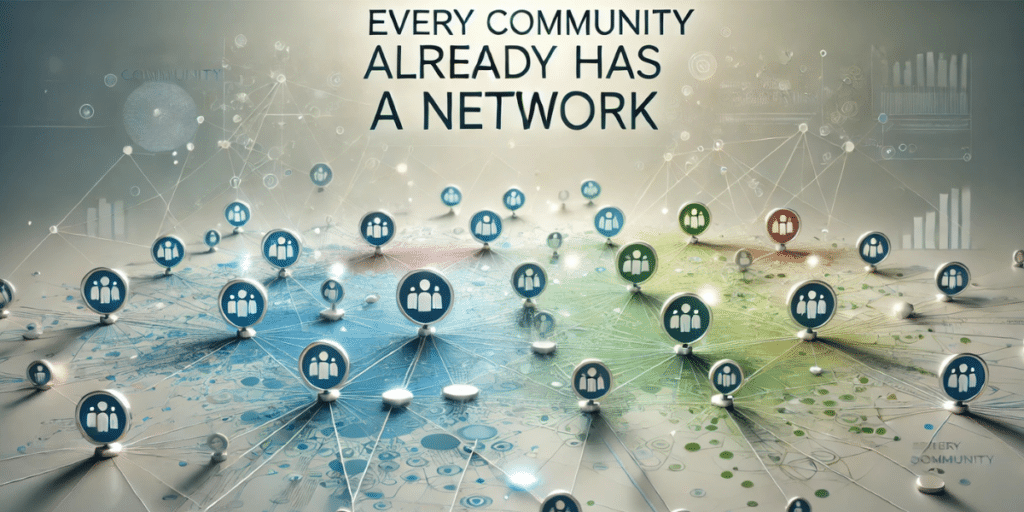When communities seek to tackle complex issues—whether it’s addressing food insecurity, improving early childhood education, supporting older adults, or developing the workforce—their go-to solution is often to organize a new network, coalition, or alliance. These efforts, typically fueled by well-intentioned goals of cross-sector collaboration, aim to bring diverse stakeholders together to break down silos and pool resources for greater impact. But there’s a critical issue with this approach: no community is ever starting from scratch when it comes to collaboration.
In reality, every community already has a rich, dynamic network of existing relationships that, though often invisible, holds immense value. These connections have developed over time between local organizations, nonprofits, government agencies, and community groups. However, many of these relationships are not well-documented or easily accessible. As a result, communities continue to pour funding and energy into building new networks—sometimes at the expense of strengthening the networks that are already in place.
This is a call to shift the sector’s approach: we need to focus more on visualizing and leveraging the relationships that already exist, rather than repeatedly starting from scratch.

Get our monthly newsletter with resources for cross-sector collaboration, VNL recommended reading, and upcoming opportunities for engaged in the “network way of working.”
The Untapped Power of Existing Networks
When we continuously build new networks without first understanding what already exists, we risk several negative consequences. New initiatives may duplicate efforts, compete for limited resources, or even undermine informal networks that have been quietly working for years. Worse still, they may exclude key stakeholders who are already positioned to make a meaningful impact but aren’t part of the newly formed group.
Instead, what if the first step in any new collaborative effort was to map the community’s existing ecosystem of relationships? Doing so would not only reveal which organizations are already connected but would also highlight areas of strength and opportunity, allowing communities to build from a solid foundation rather than reinvent the wheel.
This is the approach taken by the Jefferson County (JeffCo) PARTNER CPRM™ project, which uses network science to visualize and analyze the county’s collaboration ecosystem across four critical focus areas: food and nutrition, early childhood services, older adult services, and workforce development. By mapping the existing connections within and across these sectors, JeffCo PARTNER CPRM™ enables organizations to see the full picture of their community’s collaborative potential—before launching new initiatives that may not be necessary.
Leveraging a Network Science Approach
At the heart of the JeffCo PARTNER CPRM™ is the use of network science, a powerful tool that goes beyond identifying who is connected to whom. It visualizes the quality of these relationships—assessing trust, value, and influence—while also revealing gaps and areas where collaboration could be strengthened.
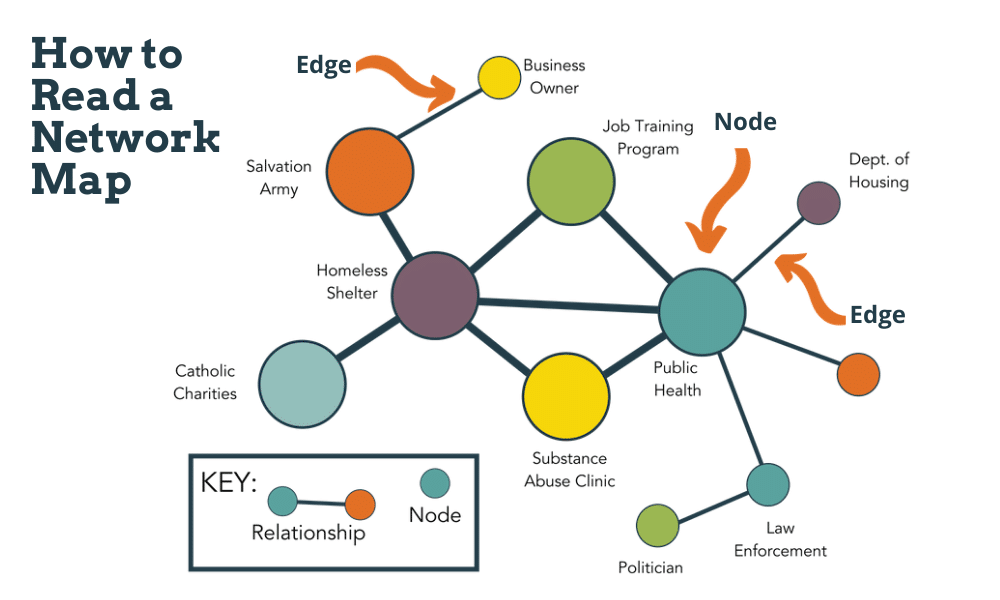
For example, Jefferson County Public Health (JCPH) serves as a key player across all four focus areas of the project. By analyzing their connections, the CPRM™ highlights how JCPH influences cross-sector initiatives and identifies opportunities to foster new partnerships in underserved areas. This level of insight helps JCPH and other organizations strategically focus their efforts on building from existing strengths rather than duplicating efforts or starting fresh.
Example: Key Outcomes from JeffCo PARTNER CPRM™
The launch of the JeffCo PARTNER CPRM™ has already demonstrated the value of this data-driven approach. Here’s how organizations across the county are using the platform to strengthen their collaborations:
1. Identifying New but Relevant Partners
One of the key benefits of PARTNER CPRM™ is helping organizations identify potential partners within their existing network. For example, workforce development agencies in Jefferson County are now locating partners in sectors like food systems and early childhood services to create integrated collaborations that better support families holistically.
Rather than creating entirely new networks, these organizations are identifying high-trust, low-involvement partners who may not yet be fully engaged but could bring significant value to cross-sector initiatives. This targeted outreach, based on existing connections, leads to more efficient and impactful collaborations.
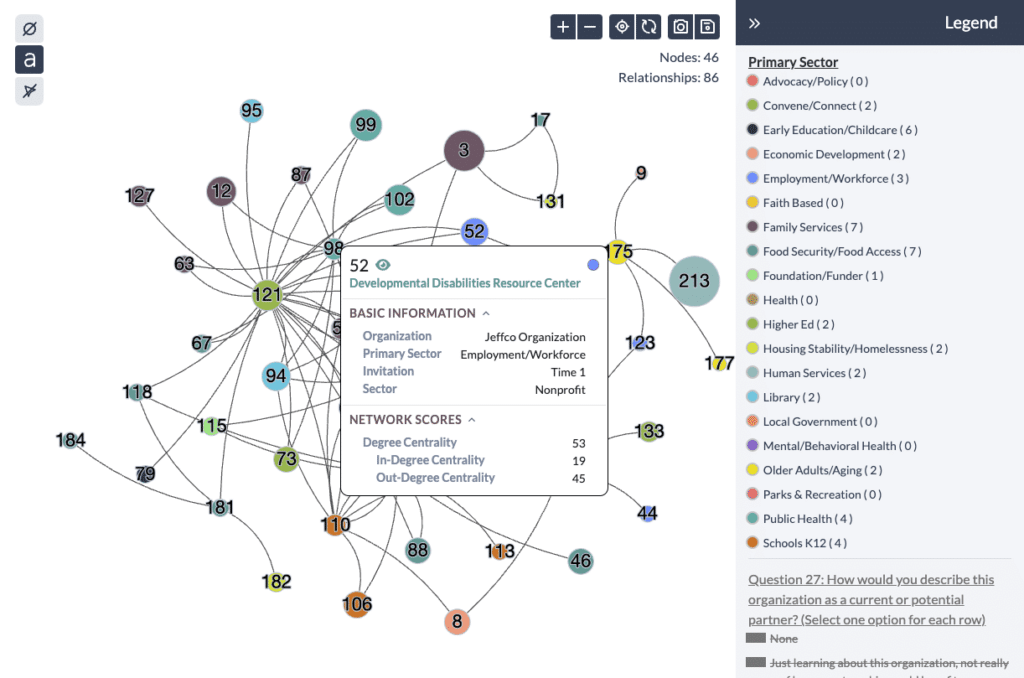
2. Visualizing Gaps and Silos
Another powerful insight provided by the CPRM™ is the ability to visualize gaps and silos within the community’s network. System change efforts often falter because sectors work in isolation, missing opportunities for collaboration that could improve the flow of information and resources.
For instance, the JeffCo CPRM™ revealed that older adult service organizations had no active connections with early childhood and maternal health organizations—an unexpected gap that, once addressed, could open doors to new collaborative opportunities. These insights help community leaders weave together networks that may have been previously disconnected, ensuring that no sector is left out of the conversation.
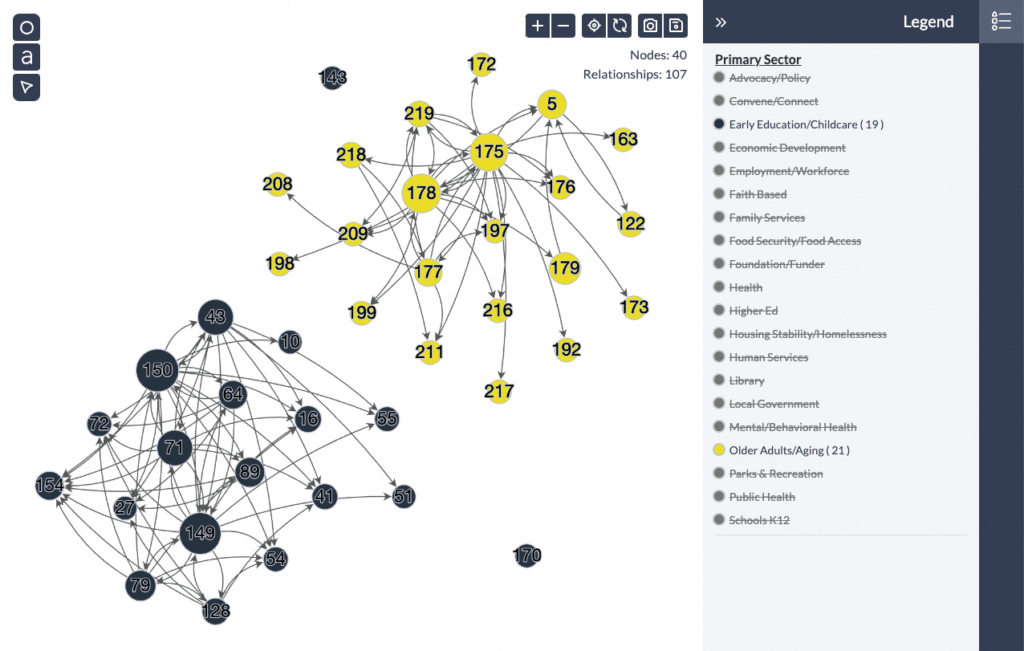
3. Targeting Underserved Populations
By integrating demographic data and GIS mapping into the network analysis, the CPRM™ also allows organizations to identify gaps in outreach—particularly in serving underrepresented or vulnerable populations. Health and social service organizations are using these insights to ensure broader inclusion and engagement, refining their strategies to reach communities that have been underserved.
For example, the platform incorporates data from County Health Rankings and Roadmaps, helping organizations drill down into the needs of specific populations, ensuring that their efforts are aligned with the most pressing local concerns.
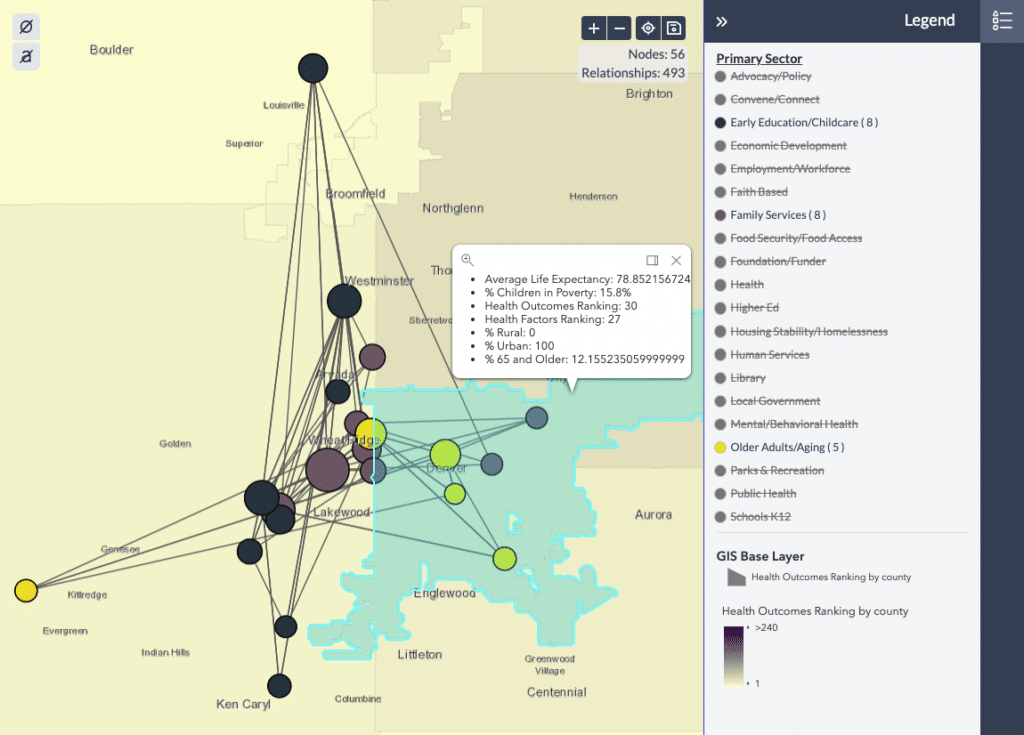
Shifting the Sector’s Approach
The lesson from the JeffCo PARTNER CPRM™ project is clear: no community starts from scratch. Every community has a wealth of existing relationships, some of which are well-established, while others may be underutilized or invisible. By prioritizing the visualization and analysis of these existing networks, communities can more effectively allocate resources, strengthen partnerships, and close gaps—without the need to constantly form new networks that may only add complexity and strain to the system.
This approach also respects and builds upon the informal networks that often exist but are undervalued in traditional coalition-building efforts. These informal networks, which may not always fit into neat categories, can be the key to unlocking deeper, more authentic collaboration.
Conclusion: Building from What Already Exists
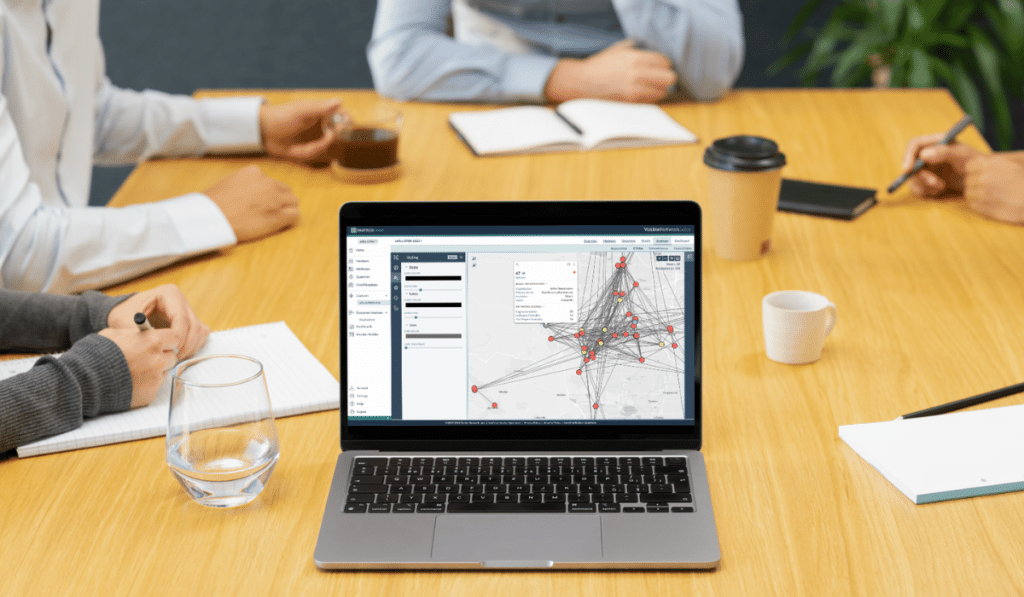
Communities seeking to drive change need to recognize that the relationships and networks they need are often already in place. The challenge is not about starting anew but about seeing the full picture—mapping the trust, influence, and connections that already exist and building from there.
The JeffCo PARTNER CPRM™ is a powerful example of how network science can transform how we approach collaboration. Rather than duplicating efforts or starting from zero, communities can now use data-driven insights to weave together stronger, more connected ecosystems that truly reflect their local strengths.
As we move forward, the call to action is simple: before building new networks, invest in understanding the one you already have. By doing so, communities can unlock untapped potential, break down silos, and create more inclusive, effective solutions to the complex challenges they face.
Take the Next Step and Get Started
Want to see how network science can help your community strengthen its collaborations?
Request a demo of PARTNER CPRM™ today and discover the power of leveraging your community’s existing relationships. We look forward to connecting!
